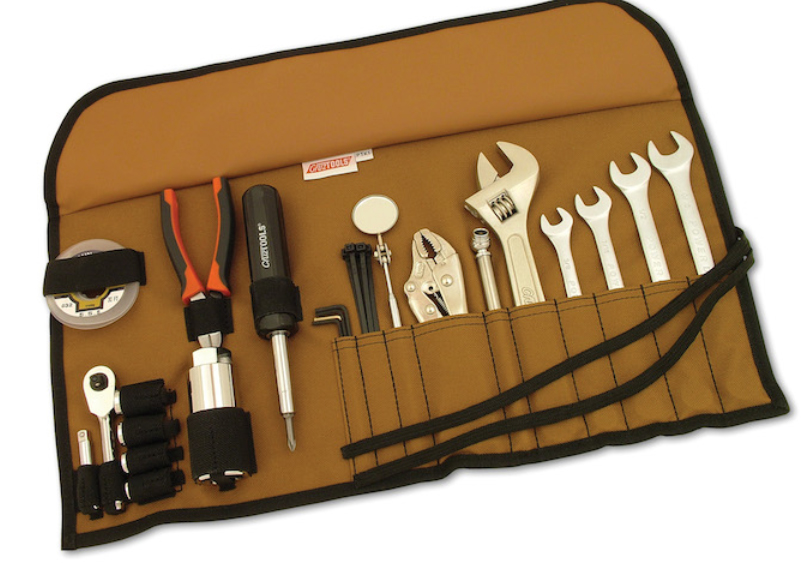 It is my belief that today’s recreational and light sport aircraft need more careful and meticulous maintenance than traditional ‘rag & tube’ ultralights and typical single engined GA aircraft.
It is my belief that today’s recreational and light sport aircraft need more careful and meticulous maintenance than traditional ‘rag & tube’ ultralights and typical single engined GA aircraft.
Over the last 15-20 years or so, recreational and light sport aircraft have become much more GA-like in their looks and construction, compared with traditional utralights of old.
Their weight and complexity has increased almost beyond the imagination of early ultralight owners; their airframes have become more and more GA-like, with concealed control systems, engine bay ducting which hides many key engine components, digital instrumentation, auto-pilots and the like. Yet recreational aircraft owners and pilots are still permitted to ‘do all their own maintenance’*.
Crucially, recreational and light sport aircraft have to be designed and built to fit under a specific gross weight limit. There is also a maximum empty weight formula related to the maximum gross, which effectively limits the empty weight of a 2-seat aircraft to around half that of a typical 2-seat GA aircraft. As a result, manufacturers have to do everything they can to minimise empty weight – usually by using light weight materials and making components as strong as they need to be, but no stronger.
This lightweight approach is not in itself an issue – indeed it has enabled the design and manufacture of some wonderful aircraft. But in reality, ‘cheaper and lighter’ means you have to be much more thorough with your inspections and maintenance.
Why?
Because the metal is thinner all round; because so-called ‘carbon fibre’ aircraft actually contain very little carbon fibre (if they really were mainly carbon fibre, their cost would be astronomical); because cables are thinner, because engines are smaller/lighter/more highly stressed, because propellers are typically composite not metal; landing gear is lighter; bearings are smaller, tolerances are tighter; and because some of their systems are quite different from typical GA aircraft, and on and on…
Although RAAus is working wonders to improve the safety of aircraft registered with them – particularly focussing on maintenance issues and authorisations to maintain*, I still have considerable doubts as to the maintenance capabilities of many RAAus Aircraft owners, who likely have little or no aircraft maintenance knowledge and experience. I myself know the A22 and A32 airframes inside out but I do not feel at all confident I could safely maintain one.
For example do these owners know:
– how properly to lockwire a bolt, and what thickness and type of wire is required?
– how to measure and adjust the tension of a control or structural cable?
– how and when to use a torque wrench correctly?
– the standard torque settings for each size of bolt?
– how and when to check static and dynamic carburettor balance?
– how to check the friction on the Rotax gearbox clutch?
– how to make sure the ends of a cable are still securely swaged?
– how to measure correctly the strength of the fabric covering on a wing?
– how to open and examine properly an oil filter after an oil change, and what to look for?
– how to check a control or structural cable for internal abrasion and wear?
– how and where to look for cracks in metal/composite/wooden airframes?
– where to place a jack to raise their aircraft?
– how to decide when to replace an ‘on condition’ item?
– what constitutes ‘acceptable’ and ‘unacceptable’ wear in an item?
Not to mention possession of all the tools needed to do these jobs properly?
Now, I’m aware of many aircraft in our Aeroprakt fleet with well over 3000 hours on them – with no particular problems. As I say, maintained properly, recreational and light sport aircraft can continue flying safely for many thousands of hours.
But if you are going to maintain your own aircraft, get proper training to do so – if you skimp on maintenance or try to save money by doing it yourself when you don’t really have the capability, at the very least your aeroplane won’t last as long as it should. And at worst, it will be your life (or that of the pilot) that’s threatened.
* Owners of RAAus registered aircraft may maintain their own aircraft provided they have an L1 Maintenance Authority (sometimes called an ‘Owner-Maintainer’ authorisation). Details of this are available on the RA Australia website at www.raa.asn.au under the member section ‘Member Training’

Hi Peter,
Thank you by updating information about Foxbat.
At the latest post you wrote about Light Sport Aircraft Maintenance.
Where is this training available? What is the duration, cost and what kind of certificate will be provided?
Best Regards
Natasha
>
There is a variety of aircraft maintenance courses available in Australia, ranging from a very basic 2-3 day programme for ultralight/recreational aircraft owners through to a formal recognised aircraft engineering qualification which takes several years to complete. We do not hold details of these programmes – please contact the relevant Australian authorities for the information you need. For example for ultralights/recreational aircraft: RAAus 02 6280 4700, or for formal aircraft maintenance and engineering qualifications: CASA 131 757. Hope that’s helpful.